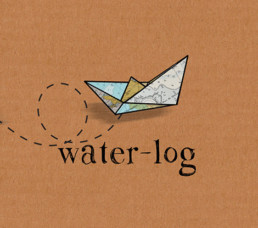A life on board presents you with many chance encounters with animals. Stumbling across a pod of dolphins or catching sight of a whale are magical moments, which we find ourselves recounting to friends at the next port. But the more constant visitor to our guard rails, providing the soundtrack to our travels, disturbing a lazy life at anchor or hitching a lift across the sea are the feathered friends we’ve met along the way.
We heard the seagulls squawk at the start of our adventures, as we prepped our yacht in Cornwall nearly five years ago. Cormorants called from the seawall when we made landfall in Spain. Tiny plovers skittered about us at low tide in Portugese river anchorages and slate grey herons glanced nonchalantly at us docking while they picked daintily among the rocks of a Moroccan marina entrance. Our first week-long sail awarded us the company of terns and shearwaters, their screeching cries growing increasingly louder as they realised in frustration that we were just another sailboat and not a fishing boat loaded with easy pickings for them.
The calm, black, silence of a loan nightwatch on the Atlantic crossing was occasionally broken by the stealthy thumping of wingbeats. Frigate birds that wheeled high around the swaying mast in the daytime would slowly circle us again in the darkness; trying and failing time and time again to land on the spreaders and catch a lift. Such nightly hitchhikers were routine across the Caribbean sea. Each day that we sailed the dusk would herald the start of our evening visitors. Tired little swallows would eventually swoop in under the sprayhood, exhausted after following and flying around us trying to figure out how to make a safe landing as we rocked and pitched in the water. These little balls of fluff and feathers would stand at the edge of the cockpit, eyeing us up at the helm in the dying light, wary of being so close to humans but grateful to give their tiny wings a rest at last. The same thing happened when we pushed out for the big blue passage of the Pacific ocean, with the flap flap slap of the clumsy feet of a brown booby trying to snag a perch on our solar panels.
And we understood why they were so keen to join our crew. Living on the boat full time makes you truly appreciate it as a shelter and sanctuary from the weather. A stay in a marina or at anchor means that the local birds ogle and eyeball your vessel, working out the perfect nooks and crannies to set up home in. Our time in Mexico saw us repeatedly evicting nesting sparrows from our boom and stackpack, on one occasion even sadly having to remove five minute eggs from the folds of our mainsail.
By this time we had new noises as a backdrop to our day. The alarm clock had been swapped for the raucous call and chatter of the grackles, who would sit brazenly on the radar, as if commanding the boat’s operations somehow. Yellow orioles would babble to one another like friendly dockmates passing the time of day which with the chirp of tropicbirds and the tap-tap-tapping of storks beaks became a steady low-level cacophony, a bit like always having a radio on in the background. Sudden splashes and loud plops would signal lunchtime as the resident pelicans would temporarily leave their territorial posts on neighbouring boats and plunge suddenly into the water of the anchorage, dive-bombing for fish repeatedly until their beaks and bellies were full. The late afternoon meant flurries of colour as flocks of green parakeets or scarlet macaws flew from their nests to a nearby island where the mango trees were. We’ve even had sunsets tinged with the added pinks of flamingos wings as they glide gently homewards to roost.
With each new country that we explore we have different birds to get to know, with strange calls, whoops and whistles, unusual names and exotic plumage. Our arrival in New Zealand brought us fresh boat neighbours in the form of the kea, the tui and the little blue penguin, as well as reuniting us with the familiar as it is the first place since England where we’ve seen ducks.
The albatross at sea is known as an omen of bad weather and a tattoo of a swallow may reflect a sailor’s hope of coming home safely. For us, rather than being a sign that land is near, our attachment to these birds that punctuate our journey is a comforting constant in a floating world.
